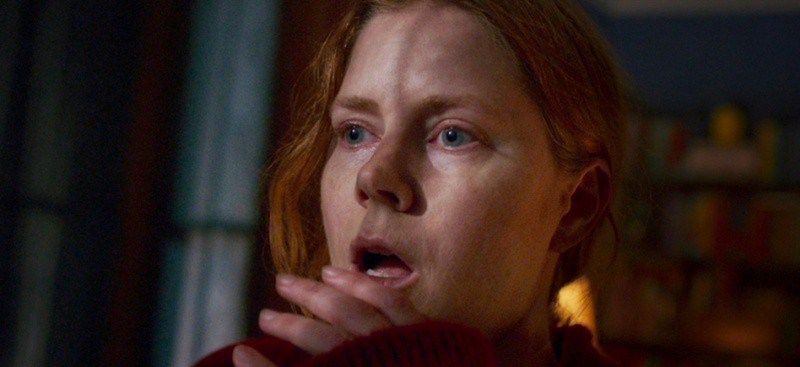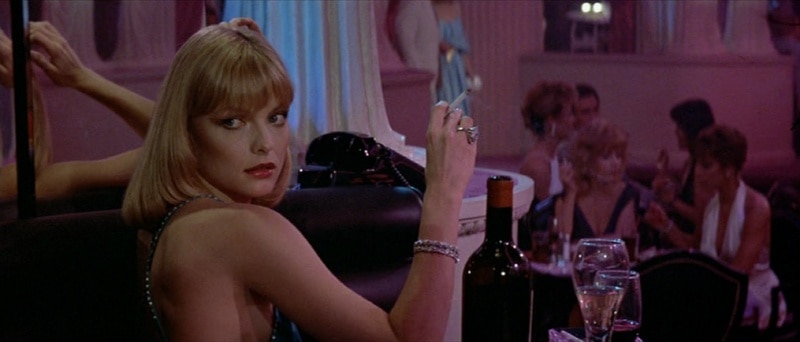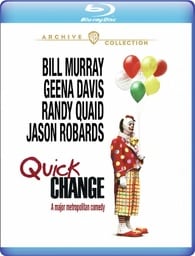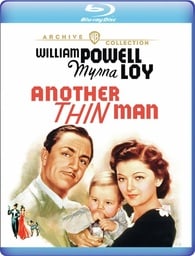Crossing the Streams is a series of columns spotlighting all the offerings hitting the big streaming services each month. This time we’re checking out the new Netflix arrivals for May 2021, including new movies from Zack Snyder, Alexandre Aja, Joe Wright, and more!
Keep reading to see what’s new on Netflix for May 2021!
Netflix Pick of the Month for May 2021

Zack Snyder’s best film remains 2004’s Dawn of the Dead, so his return to a world overrun with zombies was always going to be anticipated. Happily, the trailer for Army of the Dead (premieres May 21st) suggests he’s delivered another blast of undead action with a somewhat lighter tone. The film sees a group of thieves head into a zombie-occupied Las Vegas to pull off an epic heist, but brain munchers and human villainy threaten them at every turn. Am I irked that it steps on my plans to write a spec script about a heist in Las Vegas on the night of the Purge? Sure, but I’m still looking forward to enjoying the mayhem unleashed by Snyder, Dave Bautista, Hiroyuki Sanada, Garret Dillahunt, Tig Notaro, and others.
New Netflix Movies, Plus a Bonus Series!

Director Alexandre Aja made his name with gory horror gems (High Tension, 2003; The Hills Have Eyes, 2006) before delivering a terrific creature feature (Crawl, 2019) that reached his biggest audience yet. His latest, Oxygen (premieres May 12th), looks to be a more methodical and focused thriller as it follows a woman (Melanie Laurent) who awakes in a cryogenic chamber with no clue what brought her there. I’m guessing her co-star Mathieu Amalric has something to do with it.
The success of Thomas Harris’ Red Dragon (1981) and The Silence of the Lambs (1988) has led to decades worth of thrillers pairing a law enforcement agent with an intensely smart villain, and that trend continues with I Am All Girls (premieres May 14th). South African filmmaker Donovan Marsh made several films before getting his Hollywood break with 2018’s Hunter Killer, but as that didn’t quite pan out his follow-up is another smaller-budgeted affair. This one follows an investigator who “teams up” with a serial killer to catch a sex trafficker of children.
The long-delayed The Woman in the Window (premieres May 14th) finally arrives this month, and it brings with it a pretty stacked cast. Amy Adams headlines as an agoraphobic woman who witnesses a violent crime. AJ Finn’s source novel sounds like a Rear Window riff — rarely a bad thing — and with Joe Wright and Tracy Letts adapting (as director and writer, respectively) we’re more than a little interested in experiencing its secrets. Add in a supporting cast that includes Gary Oldman, Anthony Mackie, Julianne Moore, and Brian Tyree Henry, and you have a must watch.
Finally, Jupiter’s Legacy (premieres May 7th) may not be a new movie, but it is a new series tackling superheroes with a now familiar edginess. The show explores a world where superheroes have existed for decades and the world’s most powerful crime-fighting team is now made up of tired people in their waning years. Flashbacks reveal their origin and the interpersonal relationships while the present day sees fractures in family and ideals leading to unexpected conflicts, morality questions from the media, and death.
A Julia Roberts Double Feature

Remember John Grisham adaptations? The early 90s began a decade’s worth of big screen movies bringing the man’s novels to life, but then 2004’s Christmas with the Kranks opened and the gravy train ended. Ten feature films in eleven years, and then… nothing. Eighteen novels since, but no new adaptations. It’s weird. Anyway, The Pelican Brief (1993) is one of the truly solid films made from his books and stars a powerhouse pairing of Julia Roberts and Denzel Washington. The plot is terrific and fast-moving, the great Alan J. Pakula directs with precision, and the supporting cast is equally killer with Sam Shepard, John Heard, Tony Goldwyn, William Atherton, Stanley Tucci, John Lithgow, and more helping deliver a smart, entertaining thriller.
And a complete 180 degrees around from that legal thriller is one of the best romantic comedies out there — yeah, I said it — as Roberts and Hugh Grant star in the endlessly wonderful Notting Hill (1999). Very funny, filled with well-drawn supporting characters, Roberts and Grant at the top of their game, a still-beautiful season-changing sequence, and a beautiful ending. I will always highlight this movie when it lands on a streaming service as it is always worth watching and re-watching.
The Oldest New Arrival on Netflix

It’s not news, but Netflix is not the best streamer when it comes to older films. And to be clear, “older” in this instance means anything pre-2000. The oldest Netflix arrival for May 2021 is Oliver Stone’s Scarface (1983) starring Al Pacino as a Cuban gangster. The 80s were a different time, people! Is it a good movie? That’s subjective, but it is a lot of movie as Pacino chews any piece of scenery that’s left standing and Stone embraces the excess of it all with a 170-minute running time. Michelle Pfeiffer, Mary Elizabeth Mastrantonio, F. Murray Abraham, and more are along for the ride, and if you’ve only seen it via the poster on a dorm room wall then it’s worth a watch.
The Complete Netflix List for May 2021
| Release Date | Title | Note |
|---|---|---|
| 5/1 | Aliens Stole My Body | |
| Angelina Ballerina: Season 5-6 | ||
| Back to the Future (1985) | ||
| Back to the Future Part II (1989) | ||
| Back to the Future Part III (1990) | ||
| Barney and Friends: Season 13-14 | ||
| Best of the Best (1989) | ||
| Dead Again in Tombstone (2017) | ||
| Due Date (2010) | ||
| Fun with Dick and Jane (2005) | ||
| G.I. Joe: The Rise of Cobra (2009) | ||
| Green Zone (2010) | ||
| Hachi: A Dog's Tale (2009) | ||
| JT LeRoy (2018) | ||
| The Land Before Time (1988) | ||
| The Land Before Time II: The Great Valley Adventure (1994) | ||
| The Lovely Bones (2009) | ||
| Madagascar 3: Europe's Most Wanted (2012) | ||
| Mystic River (2003) | ||
| Never Back Down (2008) | ||
| Notting Hill (1999) | ||
| Open Season (2006) | ||
| The Pelican Brief (1993) | ||
| Resident Evil: Afterlife (2010) | ||
| Resident Evil: Extinction (2007) | ||
| S.M.A.R.T Chase (2017) | ||
| Scarface (1983) | ||
| Sitting in Limbo (2020) | ||
| Stargate (1994) | ||
| State of Play (2009) | ||
| The Sweetest Thing (2002) | ||
| Under Siege (1992) | ||
| Waist Deep (2006) | ||
| The Whole Nine Yards (2000) | ||
| Your Highness (2011) | ||
| Zack and Miri Make a Porno (2008) | ||
| Zombieland (2009) | ||
| 5/2 | Hoarders: Season 11 | |
| 5/4 | The Clovehitch Killer (2018) | |
| Selena: The Series: Part 2 | Netflix Original | |
| Trash Truck: Season 2 | Netflix Family | |
| 5/5 | Framing John DeLorean | |
| The Sons of Sam: A Descent into Darkness | Netflix Documentary | |
| 5/6 | Dead Man Down (2013) | |
| 5/7 | Girl from Nowhere: Season 2 | Netflix Original |
| Jupiter's Legacy | Netflix Original | |
| Milestone | Netflix Film | |
| Monster | Netflix Film | |
| 5/8 | Mine | Netflix Original |
| Sleepless (2017) | ||
| 5/11 | Money, Explained | Netflix Documentary |
| 5/12 | Dance of the Forty One | Netflix Film |
| Oxygen | Netflix Film | |
| The Upshaws | Netflix Original | |
| 5/13 | Castlevania: Season 4 | Netflix Anime |
| Layer Cake (2004) | ||
| 5/14 | Ferry | Netflix Film |
| Haunted: Season 3 | Netflix Original | |
| I Am All Girls | Netflix Film | |
| Jungle Beat: The Movie | Netflix Family | |
| Love, Death & Robots: Volume 2 | Netflix Original | |
| Move to Heaven | Netflix Original | |
| The Strange House | Netflix Film | |
| The Woman in the Window | Netflix Film | |
| 5/16 | Sleight (2016) | |
| 5/18 | Sardar Ka Grandson | Netflix Film |
| 5/19 | The Last Days (1998) | |
| Sabotage (2014) | ||
| Small Town Crime (2017) | ||
| Who Killed Sara?: Season 2 | Netflix Original | |
| 5/20 | Hating Peter Tatchell (2021) | |
| Special: Season 2 | Netflix Original | |
| Spy Kids 4: All the Time in the World (2011) | ||
| 5/21 | Army of the Dead | Netflix Film |
| Jurassic World Camp Cretaceous: Season 3 | Netflix Family | |
| The Neighbor: Season 2 | Netflix Original | |
| 5/22 | Sam Smith: Love Goes - Live At Abbey Road Studios | |
| 5/25 | Home (2015) | |
| 5/26 | Baggio: The Divine Ponytail | Netflix Film |
| High on the Hog: How African American Cuisine Transformed America | Netflix Documentary | |
| Nail Bomber: Manhunt | Netflix Documentary | |
| 5/27 | Black Space | Netflix Original |
| Blue Miracle | Netflix Film | |
| Eden | Netflix Anime | |
| Soy Rada: Serendipity | Netflix Comedy | |
| 5/28 | Dog Gone Trouble | Netflix Family |
| Lucifer: Season 5 Part 2 | Netflix Original | |
| The Kominsky Method: Season 3 | Netflix Original | |
| 5/31 | Dirty John: The Betty Broderick Story | |
| The Parisian Agency: Exclusive Properties | ||
| ETA Unknown | AlRawabi School for Girls | Netflix Original |
| Amy Tan: Unintended Memoir (2021) | ||
| Halston | Netflix Original | |
| Mad for Each Other | Netflix Original | |
| Master of None - Season 3 | Netflix Original | |
| Racket Boys | Netflix Original | |
| Ragnarok: Season 2 | Netflix Original |
 Quick Change [Warner Archive]
Quick Change [Warner Archive] Another Thin Man [Warner Archive]
Another Thin Man [Warner Archive] The Good, the Bad, and the Ugly [4K UltraHD, KL Studio Classics]
The Good, the Bad, and the Ugly [4K UltraHD, KL Studio Classics] Nomadland
Nomadland Switchblade Sisters [Arrow Video]
Switchblade Sisters [Arrow Video]